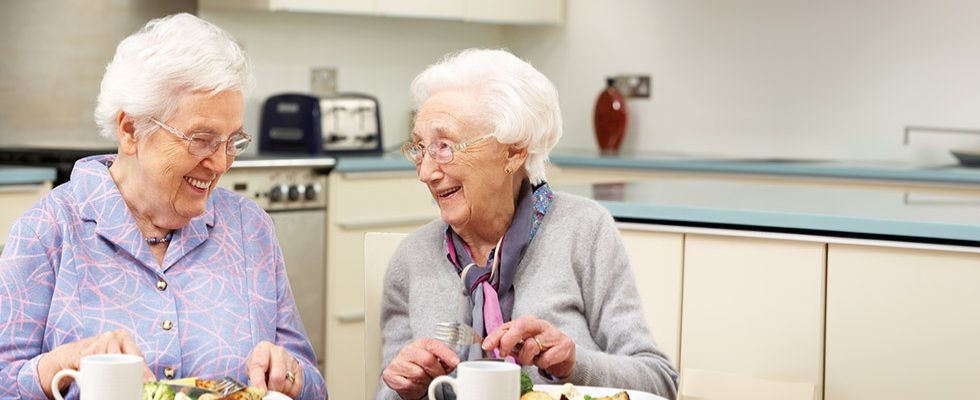
As people age, so do their nutritional needs. Metabolism slows, appetites shrink and certain health conditions can make eating well more challenging. It’s easy to slip into unhealthy eating habits without even realizing it. Older adults, especially those living alone, tend to simplify meals to the bare minimum—thus the term “tea and toast diet.”
While that might sound harmless, relying on these kinds of low-nutrient meals day after day leads to a severe lack of essential vitamins, protein and fats. Without enough nutrients, muscle loss accelerates, energy plummets and the immune system weakens, making the body more vulnerable to illness and injury. The tea and toast diet isn’t just about food—it’s often a sign of loneliness, fatigue or difficulty cooking—which make proper nutrition even more challenging.
This is where the care of homecare professionals can make a life-changing difference in an older adult’s life. They’re often the first to spot the subtle signs of malnutrition and take steps to ensure the people they care for are eating well. Nutrition is a simple and powerful way to help older adults stay strong, independent and thriving at home.
Understanding Malnutrition in the Aging Population
When people think of malnutrition, they often picture extreme cases—severe weight loss or starvation—but for many older adults, it’s much more subtle. It’s not just about how much food is on the plate; it’s about whether their intake provides the right nutrients to keep the body strong and functioning well. A poor diet can quietly weaken the immune system, slow healing, cause muscle loss and even contribute to memory problems. Older adults might also experience unintentional weight loss, muscle weakness, fatigue, hair loss or delayed wound healing.
The Role of Homecare in Preventing Malnutrition
For older adults aging at home, in-home professionals do much more than just provide assistance. They are a crucial safeguard against malnutrition. Caregivers don’t just ensure meals are eaten; they create an environment where food is enjoyable, balanced and part of a healthy routine. For many people, the challenge is having the energy, motivation or ability to prepare nutritious meals. Caregivers step in to handle meal planning, grocery shopping and cooking, ensuring that every meal meets dietary needs while still being something to look forward to. Beyond meal preparation, caregivers provide something just as important: companionship. Eating alone every day can take a toll, leading to a loss of interest in food altogether. Caregivers help by making mealtime social, whether that means sitting down for a shared meal or simply creating a warm, engaging atmosphere that encourages better eating habits. They also closely monitor subtle warning signs like weight loss, fatigue or decreased appetite that might indicate malnutrition before it becomes a bigger health issue.
Decreasing Hospital Readmissions
Malnutrition is a significant factor in hospital readmissions for older adults, creating a cycle of decline that’s difficult to break. When the body isn’t getting nutrients it needs, the immune system weakens, making infections, falls and complications from existing health conditions more likely.
A hospital stay can worsen as appetites drops due to illness, unfamiliar food or dietary restrictions. When someone returns home, they may feel too weak or unmotivated to prepare nutritious meals, putting them at a greater risk. This is where proper nutrition at home becomes essential. Eating well after a hospital stay helps the body heal, prevents dehydration and restores strength, reducing the chance of landing in the hospital. Caregivers help ensure meals are packed with the nutrients needed for recovery.
Some Solutions for Homecare Professionals
Tackling malnutrition takes both awareness and action, but the good news is that even small changes can make a big impact. Homecare professionals can help by keeping an eye on weight changes, appetite shifts and overall food intake, catching early signs of poor nutrition before they turn into serious health problems. Here are two principal ways caregivers can help aging adults maintain a healthy diet:
1. Encourage meals throughout the day.
Encouraging smaller, nutrient-dense meals throughout the day can be more manageable than large, overwhelming portions, especially for those with smaller appetites. Prioritizing protein, fiber and healthy fats helps maintain muscle strength, digestion and energy levels. But it’s just as important to consider personal food preferences while taking these steps. If someone dislikes certain foods, caregivers can find creative alternatives that still provide the essential nutrients.
2. Hydration is key.
Hydration is another important piece of the puzzle, as many older adults don’t drink enough fluids. This lack of hydration can lead to fatigue, confusion and an increased risk of falls. Simple reminders to sip water, enjoy herbal teas or eat hydrating foods like fruit and soups can make a real difference. Staying informed about best practices and collaborating with dietitians or health care professionals when needed ensures that caregivers are offering the best possible support.
Conclusion
Good nutrition isn’t just about eating; it’s about staying strong and independent and feeling good daily. For many older adults, small diet changes can considerably impact their overall health. That’s why in-home caregivers play such an essential role. Whether it’s preparing balanced meals, encouraging hydration or simply making mealtime a more enjoyable experience, they help ensure that those aging at home get the nourishment they need. With the proper support, good nutrition becomes more than just a routine—it becomes a foundation for a healthier, more fulfilling life.
